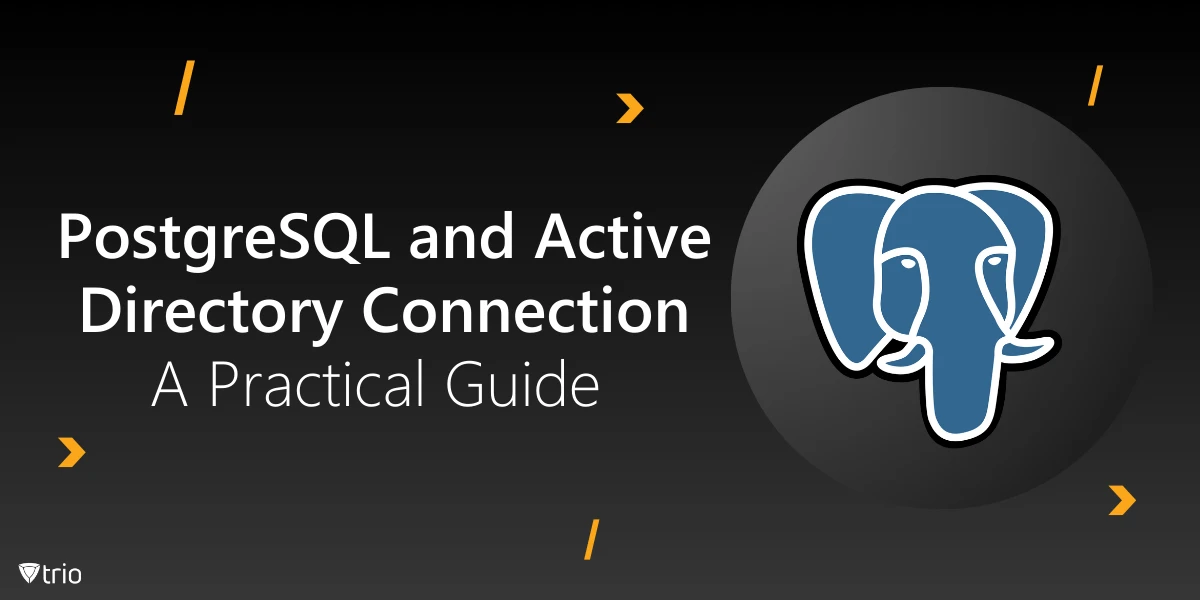PostgreSQL is a powerful, open-source database system, while Active Directory (AD) manages identity and access across networks. For IT admins, connecting PostgreSQL and AD is crucial for streamlining user authentication and improving security. This connection simplifies managing user access while ensuring better server management in increasingly complex digital environments.
What is PostgreSQL and Active Directory?
PostgreSQL is a powerful, open-source database management system that allows you to store, manage, and retrieve data efficiently. It’s commonly used by businesses for its scalability and flexibility. On the other hand, Active Directory (AD) plays a central role in identity management within a digital workspace. It organizes and secures user data, enabling controlled access to resources within an organization.
By integrating PostgreSQL with Active Directory, you streamline user authentication, simplify access control, and enhance security across your systems—ensuring your data stays protected.
Why Connect PostgreSQL to Active Directory?
Connecting PostgreSQL to Active Directory offers centralized authentication, so users access your database using the same credentials they use across the digital workspace. This reduces password fatigue and streamlines access.
The security benefits are massive. Active Directory’s policies strengthen endpoint security, as role management helps control who gets into your system. For IT teams, this integration minimizes administrative headaches, allowing them to easily manage user permissions, saving time and reducing the chance for errors.

Prerequisites for PostgreSQL and Active Directory Integration
To get started, you’ll need a compatible PostgreSQL version, an Active Directory setup, and libraries like LDAP to enable communication between the two systems. Configuring network settings and ensuring the right permissions are crucial, especially for environments with HRIS integration, where managing users efficiently is key.
It’s important to make sure both PostgreSQL and Active Directory are fully up to date. Running outdated software exposes your systems to vulnerabilities, increasing potential risks during integration, particularly in environments with strict security protocols.
Step-by-Step Guide to Connecting PostgreSQL With Active Directory
Before diving into the technical steps, it’s important to understand that connecting PostgreSQL to Active Directory isn’t just about convenience—it’s about strengthening your security and simplifying user management. With that in mind, let’s walk through the process step-by-step, so you can set up this integration smooth
Now, let’s get started!
Step 1: Install and Configure LDAP
LDAP is central to Identity and Access Management in the PostgreSQL-AD integration. It helps connect your PostgreSQL database to Active Directory for authentication. To get started, install the required LDAP libraries on your PostgreSQL server. Once installed, configure LDAP to communicate effectively with your Active Directory setup, laying the groundwork for the connection.
Step 2: Modify PostgreSQL Configuration Files
Next, you’ll need to modify PostgreSQL’s configuration files, specifically pg_hba.conf and postgresql.conf. These files control how psql authentication works. Edit them to enable LDAP-based authentication, allowing PostgreSQL Active Directory authentication. Don’t forget to specify the correct parameters for server address and search base.
Step 3: Create Role Mappings in PostgreSQL
Now, create mappings between PostgreSQL and PostgreSQL Active Directory groups. Assign roles and permissions within PostgreSQL to ensure users from your Active Directory have the correct access rights. This keeps your database secure while enabling seamless identity management across both platforms.
Step 4: Test the Connection
Finally, test the connection using a PostgreSQL and Active Directory connection example. Attempt to log in with an Active Directory user account to ensure everything works. If you encounter issues like “psql fatal certificate authentication failed for the user,” troubleshoot by checking your configuration settings or certificates.
Best Practices for PostgreSQL and Active Directory Integration
To maintain a secure and efficient setup, it’s important to regularly monitor and audit connections, especially in environments that prioritize remote work security. Periodically updating PostgreSQL and Active Directory configurations ensures you stay protected against vulnerabilities. Always backup and document your configurations, so troubleshooting and future updates become a smooth, hassle-free process.

Trio: MDM’s Role in PostgreSQL and Active Directory Integration
MDM (mobile device management) plays a key role in managing devices and securing access to corporate resources, making it relevant when integrating PostgreSQL with Active Directory. By ensuring controlled access, especially in environments with remote work security concerns, MDM solutions streamline the process.
Our company offers Trio, a powerful MDM tool that supports these needs. Try Trio’s free demo today to see how it enhances device security while simplifying management across your digital workspace.
Conclusion
Integrating PostgreSQL with Active Directory provides centralized authentication, improved security, and simplified user management. It’s a smart move for IT admins looking to enhance efficiency while reducing risks. Regularly updating configurations and monitoring connections will keep your setup secure, ensuring your systems stay robust and responsive in a dynamic work environment.
Know about news
in your inbox
Our newsletter is the perfect way to stay informed about the latest updates,
features, and news related to our mobile device management software.
Subscribe today to stay in the know and get the most out of your mobile
devices with our MDM solution app.
Recent Posts

Erase the Risk: Protect with Zero Standing Privileges
Learn how zero standing privileges eliminate persistent access rights, enhance data security and reduce the risk of unauthorized access.

Understanding Access Control Types in Cybersecurity w/ Examples
Thorough understanding of access control types & the knowledge to make informed decisions about implementing security measures in your organization.

Cloud Data Protection: Safeguarding Information in the Cloud
Learn essential strategies for robust cloud data protection, exploring tools, best practices, and policies that safeguard sensitive information.





